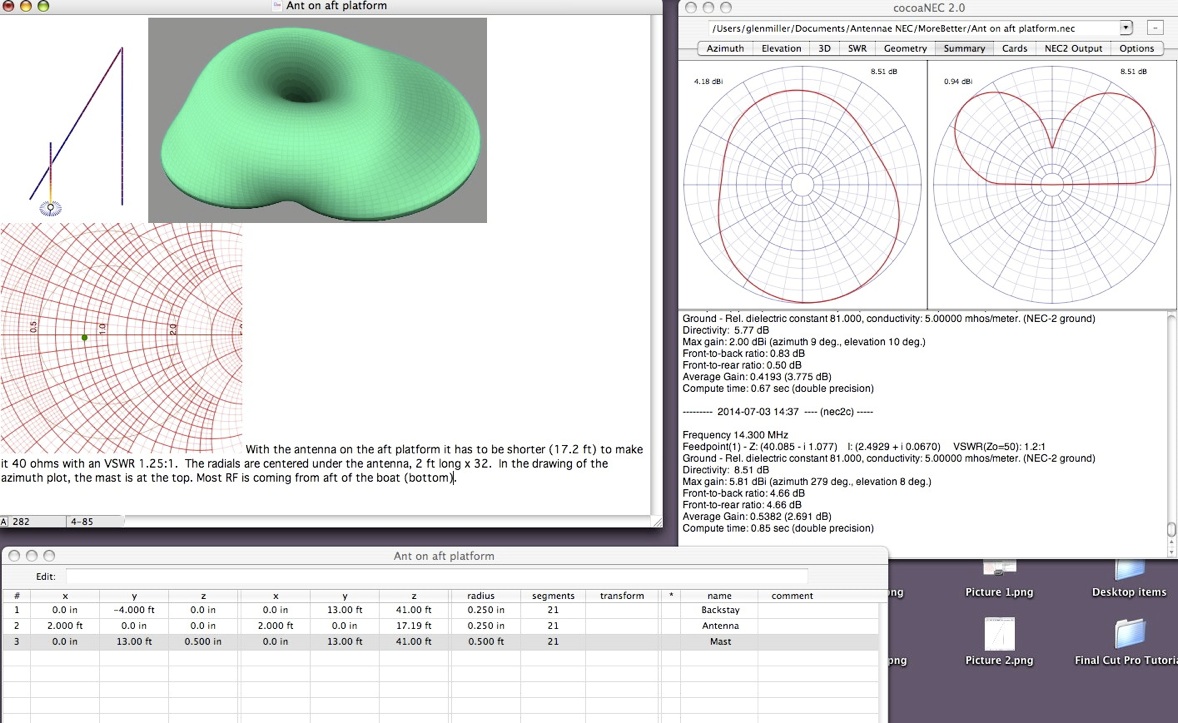SEA GROUND: At 14 Mhz (and at 12 Mhz) the ground current in the sea flows in the top 1” of the sea. At 4 Mhz it flows as much as 3” below the surface. The ss paddle is always in the water when sailing. I run a wire to the paddle and connect it directly to the counterpoise. Then AC current would flow through the sea to the paddle and back to the ground connection of the antenna. At least the paddle is available for inspection and is easily cleaned. which is important for keeping the Rf resistance low.
If I didn’t connect the counterpoise to the sea, then the ac current would flow from the counterpoise back to the transmitter.
Revised: Saturday, July 5, 2014













